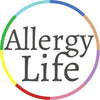Hypersensitivity type may be- Type I Allergy
Immune reactions may be from- IgE
Reactions may occur in- Minutes
Pollen allergies may also lead to Oral Allergy Syndrome (OAS) also known as Pollen Fruit Syndrome or Pollen Food Syndrome.
Oral Allergy Syndrome may occur in people that consume foods that contain pollen proteins found in pollens such as, but not limited to; Birch pollen, Alder pollen, Grass pollen, Ragweed pollen or Mugwort pollen.
These pollen proteins are found in many common fruits and vegetables, as well as some spices, tree nuts and legumes (scroll below to see some common places it can come from), all leading to an allergic reaction.
While it may be considered a mild form of a food allergy, Oral Allergy Syndrome in some cases, especially with cross-reaction, can lead to severe symptoms.

SYMPTOMS
Some of the symptoms may be characterised by:
- Itching
- Mouth tingling
- Swollen or numb lips
- Scratchy throat
- Sneezing
- Nasal congestion
- Allergic Rhinitis
- Asthma aggravation
- Anaphylaxis
The validity and severity of these symptoms are dependent on the individual and the level of exposure, as determined by a qualified health care provider.
TREATMENT
If you experience or are in the presence of someone who encounters a serious reaction (this may include difficulty breathing, wheezing, throat tightening, swelling, collapse, etc), follow their action plan or emergency instructions and call or have someone call Triple Zero (000) immediately.
Adrenaline (Epinephrine) is the first-line treatment for Anaphylaxis. After administering Adrenaline (Epinephrine), seek emergency medical attention by calling Triple Zero (000) for an ambulance.
If you are unsure what to do, call Triple Zero (000).
If you or someone you know is suspected of having an allergy, it’s important to discuss diagnosis, symptoms and treatment with a qualified health care provider to understand how to manage individual allergies and also to set up an Allergy Action Plan in the case of a reaction.
Always present your Allergy Card, Medical Alert Bracelet, Action Plan or Necklace to ensure health care providers, family members, friends, colleagues and others are aware of your Allergies.
TESTING
A skin prick test or oral food challenges may be used to test for Oral Allergy Syndrome. This may be tested in conjunction with testing for Pollen Allergies.
LABELLING
Some labels or terms you may come across on Oral Allergy Syndrome friendly products:
"Hypoallergenic" "Pollen Free"

RANDOM ALLERGY FACT
Bees carry pollen on their hind legs in a pollen basket or corbicula.
WHERE YOU MAY COME ACROSS OAS
The below is not a complete list, but just some of the places, you may come across Pollen causing Oral Allergy Syndrome:
- Almonds
- Apples
- Apricot
- Avocado
- Bananas
- Bell peppers
- Carrots
- Celery
- Chamomile Tea
- Cherries
- Cucumbers
- Fennel
- Fresh herbs, such as parsley or cilantro
- Hazelnuts
- Kiwis
- Mangoes
- Melons (Watermelon, Cantaloupe, Honeydew)
- Nectarines
- Oranges
- Papaya
- Peaches
- Peanuts
- Pears
- Pineapples
- Plums
- Potatoes
- Peppers
- Prunes
- Soybeans
- Sunflower seeds
- Tomatoes
- Zucchinis
The information provided on Allergy Life Australia is to generally educate and inform you about living with allergies, intolerances and conditions, and is not intended as medical instruction or as a substitute for diagnosis, examination and advice by a qualified health care provider.




